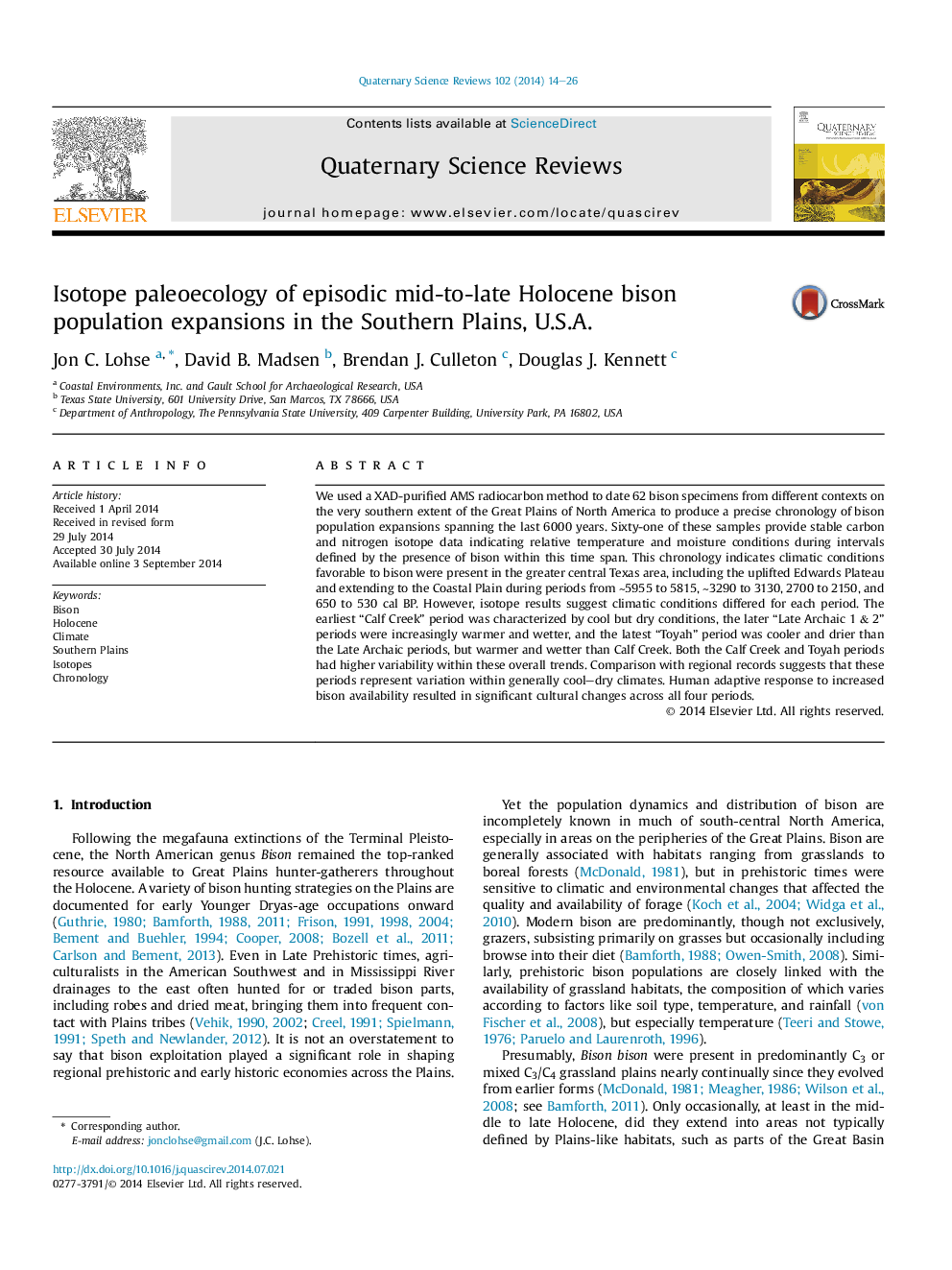| Article ID | Journal | Published Year | Pages | File Type |
|---|---|---|---|---|
| 4735318 | Quaternary Science Reviews | 2014 | 13 Pages |
•Mid to late Holocene bison from the far Southern Plains provide stable isotope data.•Climate for four bison periods is reconstructed using carbon and nitrogen isotopes.•Bison expansion into the study area is associated with relatively cold, dry climates.•Variations within these climatic conditions are quantified.
We used a XAD-purified AMS radiocarbon method to date 62 bison specimens from different contexts on the very southern extent of the Great Plains of North America to produce a precise chronology of bison population expansions spanning the last 6000 years. Sixty-one of these samples provide stable carbon and nitrogen isotope data indicating relative temperature and moisture conditions during intervals defined by the presence of bison within this time span. This chronology indicates climatic conditions favorable to bison were present in the greater central Texas area, including the uplifted Edwards Plateau and extending to the Coastal Plain during periods from ∼5955 to 5815, ∼3290 to 3130, 2700 to 2150, and 650 to 530 cal BP. However, isotope results suggest climatic conditions differed for each period. The earliest “Calf Creek” period was characterized by cool but dry conditions, the later “Late Archaic 1 & 2” periods were increasingly warmer and wetter, and the latest “Toyah” period was cooler and drier than the Late Archaic periods, but warmer and wetter than Calf Creek. Both the Calf Creek and Toyah periods had higher variability within these overall trends. Comparison with regional records suggests that these periods represent variation within generally cool–dry climates. Human adaptive response to increased bison availability resulted in significant cultural changes across all four periods.
